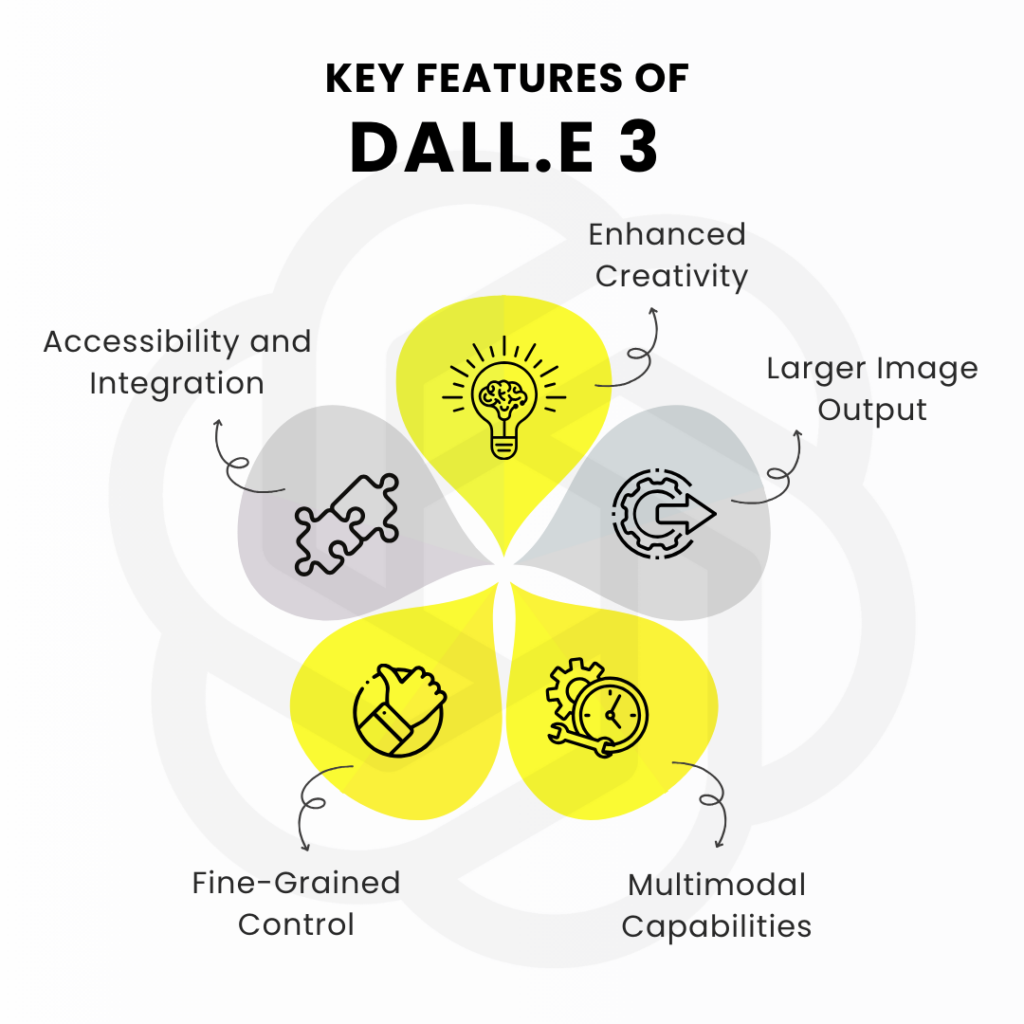In the ever-evolving landscape of artificial intelligence, breakthroughs in creative applications are both fascinating and inspiring. One such remarkable innovation is the launch of DALL·E 3, the latest version of OpenAI’s groundbreaking AI model for generating images from textual descriptions. DALL·E 3 promises to push the boundaries of what’s possible in the realm of AI-driven creativity. In this blog, we’ll explore the key features, implications, and the excitement surrounding the launch of DALL·E 3.
The Evolution of DALL·E
Before we delve into DALL·E 3, let’s take a brief look at its predecessors. DALL·E, originally introduced by OpenAI, was a groundbreaking AI model that combined the power of GPT-3 with image generation capabilities. DALL·E was designed to understand textual descriptions and produce corresponding images that aligned with the provided input. It could generate anything from “an armchair in the shape of an avocado” to “a futuristic cityscape with flying cars.” DALL·E’s ability to create imaginative, detailed images from text captured the imagination of the AI community and the public at large.
DALL·E 2 marked the second iteration of the model, and it introduced significant improvements in image generation, generating even more impressive and intricate images based on textual prompts. Now, DALL·E 3 continues to advance and refine the technology, offering new and exciting possibilities for creative AI.
Key Features of DALL·E 3
DALL·E 3 builds upon the success of its predecessors with several key features that set it apart:

a) Enhanced Creativity: DALL·E 3 boasts a heightened level of creative output. It can transform even the most abstract and imaginative textual descriptions into vivid and detailed images. The model demonstrates an impressive ability to generate unique and unexpected visual concepts.
b) Larger Image Output: DALL·E 3 can generate larger and more high-resolution images, making it even more useful for professional applications such as graphic design, art creation, and content generation.
c) Multimodal Capabilities: This version of DALL·E combines text and image processing, allowing users to input both textual descriptions and reference images, resulting in more specific and nuanced output.
d) Fine-Grained Control: DALL·E 3 offers users greater control over the style, composition, and details of the generated images. This is especially valuable for artists and designers who want to shape their creative vision effectively.
e) Accessibility and Integration: OpenAI continues to make strides in ensuring DALL·E 3 is more accessible and user-friendly, promoting its integration into a wide range of creative applications.
Implications and Applications
The launch of DALL·E 3 carries profound implications across various domains:
Art and Design: DALL·E 3 opens up new horizons for artists and designers by providing a tool for generating visual content based on textual descriptions. It empowers creators to experiment with ideas and styles more efficiently.
Content Generation: Content creators can leverage DALL·E 3 to produce high-quality images and illustrations for blogs, articles, social media, and marketing materials. This can lead to more engaging and visually appealing content.
Prototype Design: The model’s capability to generate detailed images based on descriptions can streamline the prototyping process, allowing designers and engineers to visualize ideas rapidly.
Accessibility: As DALL·E 3 becomes more user-friendly and accessible, it could benefit a wider audience, including those with limited artistic skills but a wealth of creative ideas.
Educational and Research Purposes: DALL·E 3 can also serve as a valuable educational tool, helping students and researchers visualize complex concepts and ideas.
Challenges and Considerations
Despite the immense potential, DALL·E 3 is not without its challenges and considerations. Concerns about ethical usage, copyright issues, and the potential misuse of AI-generated content remain relevant. OpenAI and the broader AI community must continue to address these concerns as the technology evolves.
Conclusion
The launch of DALL·E 3 is a significant milestone in the field of creative AI. It brings the power of AI-driven image generation to a new level, offering enhanced creativity, versatility, and accessibility. This technology is poised to reshape various industries, from art and design to content creation and beyond. However, it also comes with ethical responsibilities and concerns that must be thoughtfully navigated as we embrace this exciting advancement in AI creativity. DALL·E 3 is a testament to the potential of AI to inspire and empower human creativity, and it will undoubtedly continue to spark innovation and curiosity across the globe.